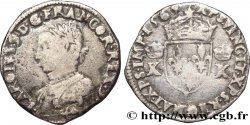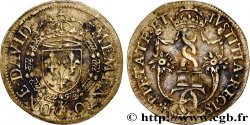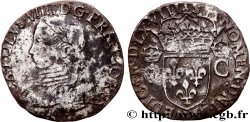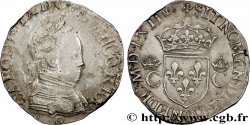Live auction - bry_830176 - CHARLES IX Demi-écu d'or au soleil du Dauphiné 1566 Grenoble
Чтобы принять участие в торгах, вы должны войти в систему и стать подтвержденным участником аукциона. Войдите, чтобы сделать ставку. Ваш аккаунт будет подтвержден в течение 48 часов. Не ждите до закрытия торгов, чтобы зарегистрироваться.Сделав ставку на данный товар, вы вступаете в юридическое соглашение на покупку выбранного товара и нажатием кнопки «Сделать ставку» подтверждаете принятие вами условий интернет-аукционов cgb.fr.
Ставка может бить сделана только в полном эквиваленте евро. Торги закроются согласно времени, указанному в описании товара, все ставки, сделанные после закрытия торгов, учитываться не будут. Не следует откладывать предложение вашей ставки до последнего момента, так как система может не успеть обработать вашу заявку, и ваша ставка не будет принята. Более детальную информацию вы найдёте здесь: FAQ по интернет-аукционам.
Все ставки победителей подлежат комиссии 18%.
Все ставки победителей подлежат комиссии 18%.
| Оценить : | 100 000 € |
| Цена : | 46 000 € |
| Максимальная предлагаемая цена : | 46 000 € |
| Конец торгов : | 06 June 2023 17:42:27 |
| Участников : | 6 Участников |
Тип Demi-écu d'or au soleil du Dauphiné
Дата: 1566
Монетный двор / Город: Grenoble
Количество отчеканенных монет: 2800
Металл: gold
Проба: 958 ‰
Диаметр: 22 mm
Ориентация осей монеты: 6 h.
Вес: 1,68 g.
Редкость: UNIQUE
Комментарии о состоянии
Ce demi-écu d’or est frappé sur un flan large et légèrement irrégulier. Monnaie de toute beauté, avec son brillant et son coupant de frappe. Petite faiblesse de frappe à 5 heures au droit. Monnaie pour laquelle nous avons hésité à mettre SPL
Ссылки в каталоге: :
Происхождение:
Avec son certificat d'exportation de bien culturel n°225227 délivré par le ministère français de la Culture
Лицевая сторона
Аверс: легенда: (SOLEIL À SIX RAYONS) CAROLVS. 9. DEI G. FRANCOR. REX. (MM).
Аверс: описание: Écu couronné, écartelé aux 1 et 4 de France, aux 2 et 3 de Dauphiné.
Аверс: перевод: (Charles IX, par la grâce de Dieu, roi des Francs).
Обратная сторона
Реверс: легенда: (ROSE) XPS. VINCIT. XPS REGNAT. XPS. IN. 1566. (MM).
Реверс: Описание: Croix fleurdelisée avec un losange incurvé en cœur contenant la lettre d'atelier (Z).
Реверс: перевод: (Le Christ vainc, règne et commande).
Комментарий
Demi-écu d’or ayant fait l’objet d’un article dans le Bulletin Numismatique du mois de mai 2023, dont nous reprenons quelques éléments :
Une monnaie d’exception enfin retrouvée : le demi-écu d’or du Dauphiné de Charles IX (Grenoble, 1566).
En 1956, Jean Lafaurie et Pierre Prieur mentionnaient l’existence d’un demi-écu d’or de Charles IX pour le Dauphiné, cette monnaie restant à retrouver. La notice n° 894, p. 83, de leur ouvrage indiquait :
« Demi-écu d’or du Dauphiné. Même description. Poids légal 1 gr. 68. Atelier Grenoble. Il a été frappé, au moins en 1566, des Demi-écus d’or au type delphinal ; aucun exemplaire n’a été retrouvé ».
Depuis 1956, aucun demi-écu d’or n’avait été retrouvé et cette pièce est l’une des plus rares – si ce n’est la plus rare – du règne de Charles IX.
Le différent d’atelier de Grenoble, la lettre Z, est présent en cœur de la croix du revers et est complété par une rose située du même côté, en début de légende. Le différent du maître Pierre De Luan, en exercice de 1556 à 1567, est constitué par la lettre D placée en fin des légendes.
Le type de cette monnaie est en tout point similaire à l’écu d’or (Figure 2) avec toutefois une absence de point secret sous la troisième lettre de la légende du droit. Hormis ce petit détail, seuls le poids et le diamètre permettent de distinguer l’écu d’or du demi-écu.
Comment connaissait-on l’existence de cette monnaie sans jamais l’avoir retrouvée ?
Les registres des délivrances ou les états annuels récapitulatifs des productions des années 1560 ne sont pas conservés pour Grenoble. Il existe toutefois deux registres conservés aux Archives nationales, celui notant l’apport des boîtes des monnaies du royaume au greffe de la Cour des monnaies (AN, Z1b 296, f° 11 v°) (Figure 3) et le registre dit du contrôle de la recette générale des boîtes (AN, Z1b 301, f° 105) (Figure 4). Ces deux registres, indiquent que la boîte de l’année 1566 de la Monnaie de Grenoble contenait notamment 11,5 écus d’or, donc des demi-écus. C’est sur la base de ces deux registres que Pierre Prieur, qui a fait les recherches et dépouillements en archives pour le « Lafaurie/Prieur », a pu supposer l’existence de cette monnaie. La boîte de l’année 1566 de la Monnaie de Grenoble a été apportée au greffe de la Cour des monnaies le 16 mai 1567 et elle fut ouverte le premier juillet suivant.
Pour les années 1562-1563, 1565-1569, 1573 et 1574, des frappes d’écus d’or du Dauphiné sont bien attestées à Grenoble, toutefois, hormis 1566, les autres chiffres de mise en boîte tombant justes, nous ne pouvons pas affirmer que des demi-écus d’or aient été frappés à d’autres millésimes que 1566. Le chiffre de frappe en écus se situe autour de 2300 exemplaires, en suivant la règle de mise en boîte d’un écu d’or mis en boîte pour 200 délivrés. Ce chiffre, assez faible, comprend une faible quantité de demi-écus d’or
.
Une monnaie d’exception enfin retrouvée : le demi-écu d’or du Dauphiné de Charles IX (Grenoble, 1566).
En 1956, Jean Lafaurie et Pierre Prieur mentionnaient l’existence d’un demi-écu d’or de Charles IX pour le Dauphiné, cette monnaie restant à retrouver. La notice n° 894, p. 83, de leur ouvrage indiquait :
« Demi-écu d’or du Dauphiné. Même description. Poids légal 1 gr. 68. Atelier Grenoble. Il a été frappé, au moins en 1566, des Demi-écus d’or au type delphinal ; aucun exemplaire n’a été retrouvé ».
Depuis 1956, aucun demi-écu d’or n’avait été retrouvé et cette pièce est l’une des plus rares – si ce n’est la plus rare – du règne de Charles IX.
Le différent d’atelier de Grenoble, la lettre Z, est présent en cœur de la croix du revers et est complété par une rose située du même côté, en début de légende. Le différent du maître Pierre De Luan, en exercice de 1556 à 1567, est constitué par la lettre D placée en fin des légendes.
Le type de cette monnaie est en tout point similaire à l’écu d’or (Figure 2) avec toutefois une absence de point secret sous la troisième lettre de la légende du droit. Hormis ce petit détail, seuls le poids et le diamètre permettent de distinguer l’écu d’or du demi-écu.
Comment connaissait-on l’existence de cette monnaie sans jamais l’avoir retrouvée ?
Les registres des délivrances ou les états annuels récapitulatifs des productions des années 1560 ne sont pas conservés pour Grenoble. Il existe toutefois deux registres conservés aux Archives nationales, celui notant l’apport des boîtes des monnaies du royaume au greffe de la Cour des monnaies (AN, Z1b 296, f° 11 v°) (Figure 3) et le registre dit du contrôle de la recette générale des boîtes (AN, Z1b 301, f° 105) (Figure 4). Ces deux registres, indiquent que la boîte de l’année 1566 de la Monnaie de Grenoble contenait notamment 11,5 écus d’or, donc des demi-écus. C’est sur la base de ces deux registres que Pierre Prieur, qui a fait les recherches et dépouillements en archives pour le « Lafaurie/Prieur », a pu supposer l’existence de cette monnaie. La boîte de l’année 1566 de la Monnaie de Grenoble a été apportée au greffe de la Cour des monnaies le 16 mai 1567 et elle fut ouverte le premier juillet suivant.
Pour les années 1562-1563, 1565-1569, 1573 et 1574, des frappes d’écus d’or du Dauphiné sont bien attestées à Grenoble, toutefois, hormis 1566, les autres chiffres de mise en boîte tombant justes, nous ne pouvons pas affirmer que des demi-écus d’or aient été frappés à d’autres millésimes que 1566. Le chiffre de frappe en écus se situe autour de 2300 exemplaires, en suivant la règle de mise en boîte d’un écu d’or mis en boîte pour 200 délivrés. Ce chiffre, assez faible, comprend une faible quantité de demi-écus d’or
.








 Cообщить об ошибке
Cообщить об ошибке Распечатать страницу
Распечатать страницу Отправить мой выбор
Отправить мой выбор Задать вопрос
Задать вопрос Consign / sell
Consign / sell
 Информация
Информация



